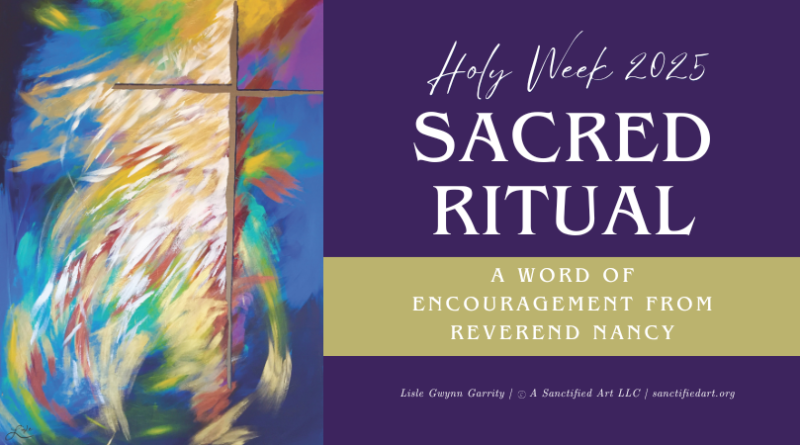Sacred ritual
In the Episcopal Church, Holy Week is a deeply sacred time marking events in the last week of Jesus’ life. More than simply days of remembrance, Holy Week observances – prayer, worship, and reflection – are spiritual disciplines. They form hearts through the rhythms of sacred ritual. Moving through Holy Week offers insight into how God is continuing to work today through celebration and suffering, despair, and hope. Whether praying individually or participating in special liturgies, you are invited into a deeper connection with God through reflection and silence. Scripture is not only read but embodied in the liturgies – through spoken word, music, and symbolic action.
Holy Week begins with Palm Sunday, celebrating Jesus’ triumphant entry into Jerusalem. This year we will stay with that part of the story a bit longer and end our worship with the crucifixion as recorded by St. Luke. Monday, Tuesday, and Wednesday, we hear stories of Jesus’ interactions with ordinary people and his closest disciples, leading us to his final meal with them on Thursday, which is known as “Maundy Thursday” (“maundy” means mandate).
At All Saints’, we too begin Maundy Thursday with a meal, closing with the celebration of communion as Jesus directed (mandated) his disciples to do when they gathered. The mood shifts even further as Jesus moved from that meal to prayer in the Garden of Gethsemane and then was arrested, tried, and sentenced to death by crucifixion. The altar is stripped of its hangings, just as all of us are stripped bare by the judgments of the world. Overnight we take an hour to pray, as Jesus asked, for all that God has laid on our hearts.
In the morning of Good Friday, we follow the Stations of the Cross and are led by our youth through Jesus’ sentencing, crucifixion, and entombment. At noon, we hear the crucifixion as recorded by St. John and offer prayers for the world for which Jesus gave his life. In the evening, we hear Jesus’ words from the cross recorded in each of the four Gospels. On Holy Saturday our altar guild offers prayer as they prepare our worship spaces for the Easter celebration. Evening services of Easter Vigil, one led by our youth, the other by the Choir of All Saints’, follow the earliest pattern of Christian worship, beginning in darkness and death and culminating in light and hope marking the first celebration of Easter. Easter Sunday, we gather to declare “Alleluia Christ is risen, The Lord is risen indeed! Alleluia.”
Following Jesus does not offer easy answers to suffering. Jesus does not ask us to ignore pain but to stand within it, clinging to hope in the darkness, refusing to let go of God’s promises. Christian life involves a costly identification with Christ’s death – a dying to self, to comfort, and to control. But it is also infused with resurrection life: a hope that sustains us through suffering, not an escape from it, courage to stand firm in God’s never-failing love. Discipleship is both cross-shaped and hope-filled, embracing a path of endurance that leads to eternal life in Christ.
Nancy+

